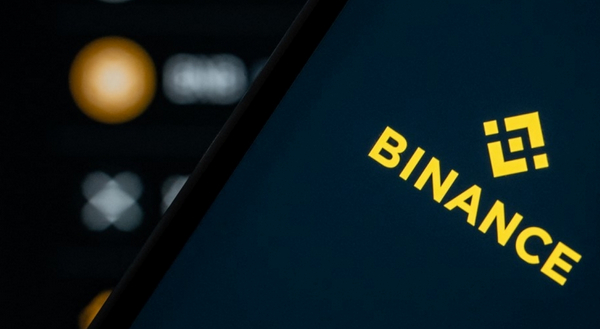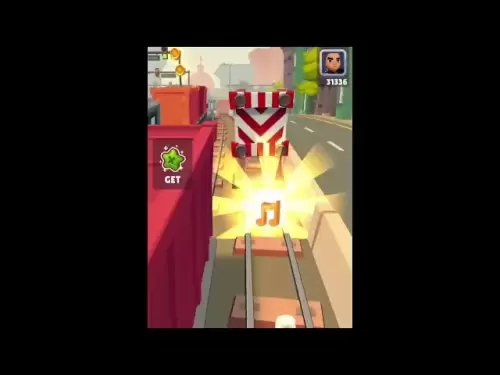-
 Bitcoin
Bitcoin $109,583.2239
0.19% -
 Ethereum
Ethereum $2,583.4612
0.48% -
 Tether USDt
Tether USDt $1.0003
-0.04% -
 XRP
XRP $2.2681
0.70% -
 BNB
BNB $659.9218
-0.52% -
 Solana
Solana $151.4961
-0.37% -
 USDC
USDC $0.9999
-0.02% -
 TRON
TRON $0.2861
1.20% -
 Dogecoin
Dogecoin $0.1718
0.04% -
 Cardano
Cardano $0.5960
-0.07% -
 Hyperliquid
Hyperliquid $40.1233
2.85% -
 Sui
Sui $2.9974
2.48% -
 Bitcoin Cash
Bitcoin Cash $497.1279
-1.76% -
 Chainlink
Chainlink $13.7275
-0.22% -
 UNUS SED LEO
UNUS SED LEO $9.0241
0.70% -
 Avalanche
Avalanche $18.5536
-0.88% -
 Stellar
Stellar $0.2421
1.39% -
 Toncoin
Toncoin $2.8593
-0.51% -
 Shiba Inu
Shiba Inu $0.0...01187
-0.07% -
 Litecoin
Litecoin $90.0023
2.90% -
 Hedera
Hedera $0.1590
2.79% -
 Monero
Monero $322.1495
0.00% -
 Polkadot
Polkadot $3.5453
-1.00% -
 Dai
Dai $1.0000
-0.01% -
 Bitget Token
Bitget Token $4.5733
-1.06% -
 Ethena USDe
Ethena USDe $1.0002
-0.01% -
 Uniswap
Uniswap $7.6345
3.03% -
 Aave
Aave $279.2583
0.47% -
 Pepe
Pepe $0.0...01003
-1.52% -
 Pi
Pi $0.4941
-0.32%
What does contract trading on Binance mean
To commence contract trading on Binance, traders must create an account, pass identity verification, comprehend important terminology, select a contract type and trading pair, place orders, monitor positions, and implement risk management techniques.
Nov 17, 2024 at 05:10 am

Contract Trading on Binance: A Comprehensive Guide
Introduction
Contract trading, also known as futures trading, is a popular trading strategy in the cryptocurrency market. It allows traders to speculate on the future price of an asset without actually owning it. Binance, the world's largest cryptocurrency exchange, offers a comprehensive contract trading platform with a wide range of assets and features.
Benefits of Contract Trading on Binance
- Leverage: Contract trading allows traders to use leverage, which magnifies their profits and losses.
- Flexibility: Binance offers a variety of contract types, including perpetual and delivery contracts, providing traders with flexibility in their trading strategies.
- Low fees: Binance offers competitive trading fees, making it an attractive platform for both experienced and novice traders.
- Insurance fund: Binance provides an insurance fund to protect traders against liquidations due to extreme market volatility.
How to Trade Contracts on Binance
1. Open a Binance Account
The first step to trading contracts on Binance is to open an account. The process is simple and straightforward. You can sign up using your email address, Google account, or Apple ID.
2. Verify Your Identity
To ensure compliance with regulations, Binance requires all users to verify their identity before trading contracts. The verification process involves submitting personal information and documentation, such as a driver's license or passport.
3. Understand Contract Terminology
Before starting to trade contracts, it is essential to understand the relevant terminology. Key terms include:
- Margin: The initial amount you deposit to open a contract trade.
- Leverage: The ratio of your margin to the total value of the contract.
- Mark price: The current market price of the asset used to calculate contract values.
- Liquidation price: The price at which your contract will be liquidated if you fail to maintain sufficient margin.
4. Choose a Contract
Binance offers a variety of contract types, including perpetual and delivery contracts. Each type has its own characteristics, and it is important to choose the one that best suits your trading strategy.
- Perpetual contracts: These contracts have no expiration date, allowing you to hold them indefinitely.
- Delivery contracts: These contracts have a specific expiration date, at which point the underlying asset must be delivered.
5. Select a Trading Pair
Once you have chosen a contract type, you need to select a trading pair. Binance offers a wide range of trading pairs, including BTC/USDT, ETH/BUSD, and BNB/BTC.
6. Place an Order
To place an order, you need to specify the order type, the number of contracts, and the price. Binance offers a variety of order types, including limit orders, market orders, and stop orders.
- Limit orders: Allow you to specify the price at which you want to buy or sell contracts.
- Market orders: Execute immediately at the current market price.
- Stop orders: Are triggered when the market price reaches a certain level.
7. Monitor Your Position
Once your order has been executed, you should closely monitor your position. The profit or loss on your trade will fluctuate based on the difference between the current market price and the price at which you opened the contract.
8. Manage Your Risk
Contract trading can be risky, and it is important to manage your risk carefully. Some risk management strategies include:
- Using stop-loss orders to limit your losses.
- Maintaining sufficient margin to avoid liquidation.
- Diversifying your trades across multiple assets and strategies.
Conclusion
Contract trading on Binance can be a powerful tool for speculative traders. However, it is essential to understand the risks involved and to trade responsibly. By following the steps outlined in this guide, you can increase your chances of success in the crypto futures market.
Disclaimer:info@kdj.com
The information provided is not trading advice. kdj.com does not assume any responsibility for any investments made based on the information provided in this article. Cryptocurrencies are highly volatile and it is highly recommended that you invest with caution after thorough research!
If you believe that the content used on this website infringes your copyright, please contact us immediately (info@kdj.com) and we will delete it promptly.
- LUNA Crypto Collapse: From Billions Lost to a Quiet Comeback?
- 2025-07-04 02:35:18
- Briber's Four Forces: Decoding the Dynamics of Crypto Incentives
- 2025-07-04 02:35:18
- Solana DeFi Accumulation: Riding the Wave or Just HODLing On?
- 2025-07-04 02:40:12
- ZKasino's $30M Rug Pull: Founder Arrested in UAE – Justice Served?
- 2025-07-04 00:30:13
- Bitcoin's Bull Run: Standard Chartered and the ETF Inflow Effect
- 2025-07-04 00:30:13
- Bitcoin, Crypto, and Market Sentiment: Riding the Bullish Wave?
- 2025-07-04 01:10:12
Related knowledge

How to identify the contract value range in combination with the market profile?
Jul 02,2025 at 10:56pm
Understanding the Market ProfileTo effectively identify the contract value range in combination with the market profile, it's essential to first understand what each concept entails. The market profile is a framework that helps traders visualize how price and time interact across a given period, typically a trading day or session. It provides insights i...

How to use the price slope to filter the false breakthrough signal of the contract?
Jun 20,2025 at 06:56pm
Understanding the Concept of Price Slope in Contract TradingIn contract trading, especially within cryptocurrency derivatives markets, price slope refers to the rate at which the price changes over a specific time period. It helps traders assess the strength and sustainability of a trend. A steep slope may indicate strong momentum, while a shallow slope...

How to determine the expected volatility of the contract through the volatility cone?
Jun 19,2025 at 12:28pm
Understanding the Basics of Volatility in Cryptocurrency ContractsIn the realm of cryptocurrency trading, volatility is a key metric that traders use to assess potential risk and reward. When dealing with futures contracts, understanding how volatile an asset might become over time is crucial for position sizing, risk management, and strategy developmen...

How to formulate a contract intraday trading plan in combination with the pivot point system?
Jun 21,2025 at 03:42pm
Understanding the Basics of Pivot Points in Cryptocurrency TradingPivot points are technical analysis tools used by traders to identify potential support and resistance levels. These levels are calculated using the previous day's high, low, and closing prices. In the context of cryptocurrency trading, where markets operate 24/7, pivot points help trader...

How to adjust the contract position ratio through the price fluctuation entropy?
Jun 22,2025 at 11:42am
Understanding Price Fluctuation Entropy in Cryptocurrency ContractsIn the world of cryptocurrency futures trading, price fluctuation entropy is a relatively new concept used to measure market volatility and uncertainty. It derives from information theory, where entropy refers to the degree of randomness or unpredictability in a system. In crypto contrac...

How to use the volume swing indicator to predict the contract volume-price divergence?
Jun 18,2025 at 11:42pm
Understanding the Volume Swing IndicatorThe volume swing indicator is a technical analysis tool used primarily in cryptocurrency trading to evaluate changes in volume over time. Unlike price-based indicators, this metric focuses solely on trading volume, which can provide early signals about potential market reversals or continuations. The key idea behi...

How to identify the contract value range in combination with the market profile?
Jul 02,2025 at 10:56pm
Understanding the Market ProfileTo effectively identify the contract value range in combination with the market profile, it's essential to first understand what each concept entails. The market profile is a framework that helps traders visualize how price and time interact across a given period, typically a trading day or session. It provides insights i...

How to use the price slope to filter the false breakthrough signal of the contract?
Jun 20,2025 at 06:56pm
Understanding the Concept of Price Slope in Contract TradingIn contract trading, especially within cryptocurrency derivatives markets, price slope refers to the rate at which the price changes over a specific time period. It helps traders assess the strength and sustainability of a trend. A steep slope may indicate strong momentum, while a shallow slope...

How to determine the expected volatility of the contract through the volatility cone?
Jun 19,2025 at 12:28pm
Understanding the Basics of Volatility in Cryptocurrency ContractsIn the realm of cryptocurrency trading, volatility is a key metric that traders use to assess potential risk and reward. When dealing with futures contracts, understanding how volatile an asset might become over time is crucial for position sizing, risk management, and strategy developmen...

How to formulate a contract intraday trading plan in combination with the pivot point system?
Jun 21,2025 at 03:42pm
Understanding the Basics of Pivot Points in Cryptocurrency TradingPivot points are technical analysis tools used by traders to identify potential support and resistance levels. These levels are calculated using the previous day's high, low, and closing prices. In the context of cryptocurrency trading, where markets operate 24/7, pivot points help trader...

How to adjust the contract position ratio through the price fluctuation entropy?
Jun 22,2025 at 11:42am
Understanding Price Fluctuation Entropy in Cryptocurrency ContractsIn the world of cryptocurrency futures trading, price fluctuation entropy is a relatively new concept used to measure market volatility and uncertainty. It derives from information theory, where entropy refers to the degree of randomness or unpredictability in a system. In crypto contrac...

How to use the volume swing indicator to predict the contract volume-price divergence?
Jun 18,2025 at 11:42pm
Understanding the Volume Swing IndicatorThe volume swing indicator is a technical analysis tool used primarily in cryptocurrency trading to evaluate changes in volume over time. Unlike price-based indicators, this metric focuses solely on trading volume, which can provide early signals about potential market reversals or continuations. The key idea behi...
See all articles

























































































